
A Leopard and his spots
HDW ENTERPRISES &
Foothill Felines Bengals/Savannahs

A Leopard and his spots
|
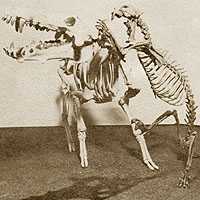
"Dinictis" | Lived in the Middle Oligocene Period
(32 million years ago) Copyright the Natural History Museum of Los Angeles County | ||

"Smilodon fatalis" | These cats were probably as heavy as today's tigers, and are also known as "Saber-Toothed Tigers".
This animal was a prehistoric creature that had enlarged canine teeth that were about 8" long. The first saber-toothed cats lived about 40 million years ago, and became extinct about 10,000 years ago. Painting by John C. Dawson. Copyright the Natural History Museum of Los Angeles County. | ||
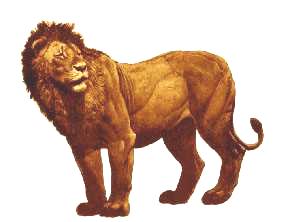
"Panthera atrox" | Now extinct, these were among the very first lions to roam the earth.
Weighing from 350 - 500 pounds, they were known for their very long, shaggy fur, and thick manes in the males. Painting by John C. Dawson. Copyright the Natural History Museum of Los Angeles County |
|
The three images directly above on this page are copyright the Natural History Museum of Los Angeles
County and used with express permission. |
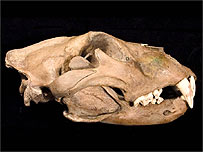
| Two lion skulls unearthed at the Tower of London have been dated to Medieval times, shedding light on the lost institution of the Royal Menagerie. It shows the relationship between England's early monarchs and the lion becoming known as the "King of Beasts". According to Jeremy Ashbee: "Lions were particularly prized as the living emblems of the royal arms of England, much like modern mascots." The lions may have been among the first to turn up in Northern Europe since the big cats went extinct in the region at the end of the last Ice Age. | ||
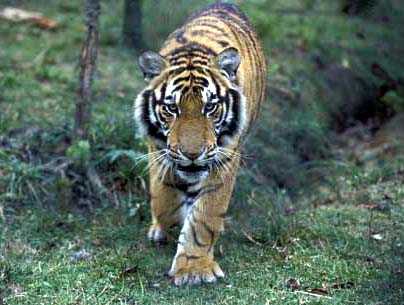
"Panthera tigris amoyensis" | At this writing, there are only a handful of these tigers left on earth. They are believed to be the direct descendants of the earliest, original tigers who roamed the world. | ||
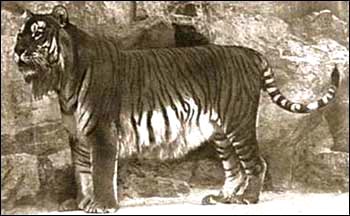
"Panthera tigris virgata" | The Caspian tiger, also known as the Persian tiger (Panthera tigris virgata) was the westernmost subspecies of tiger, found in Iran, Iraq, Afghanistan, Turkey, Mongolia, Kazakhstan, Caucasus, Tajikistan, Turkmenistan and Uzbekistan until it apparently became extinct in the late 1950s. Because this tiger was known to have followed the migratory herds of their preferred prey animals, such as the boar, the Kazakh people referred to these tigers as “road” or “traveling leopards”. These are the big cats that were depicted in the popular tiger-laden artistic representations of the mighty Ottoman and Persian Empires. | ||

"Acinonyx pardinensis" | Early forms of the cheetah ("Acinonyx studeri") are believed to have inhabited North America as far back as 2˝ million years ago to as recently as 12,000 years ago (the smaller "Acinonyx trumani"). Although the 'American' cheetahs exhibited many characteristics of the modern cheetah there is some evidence against a close relationship. It's also questioned whether the cheetah in North America had possible ancestral links with the puma.
The early 'Old World' form, "Acinonyx pardinensis" found in Europe, most closely resembled the modern day cheetah apart with the exception of being much larger. Fossil remains of "A.pardinensis" in France have been dated at around 2 million years old.
Photo courtesy of: http://id-archserve.ucsb.edu/anth3/Courseware/Pleistocene/6_Bestiary.html. |
|
 | © 1996-2008 Copyright
by HDW Enterprises, Inc. - All Rights Reserved. 
HDW Enterprises, Inc., P.O. Box 418104, Sacramento, CA 95841-8104 (916) 481-CATS ph/fax http://www.hdw-inc.com e-mail: holly@hdw-inc.com |